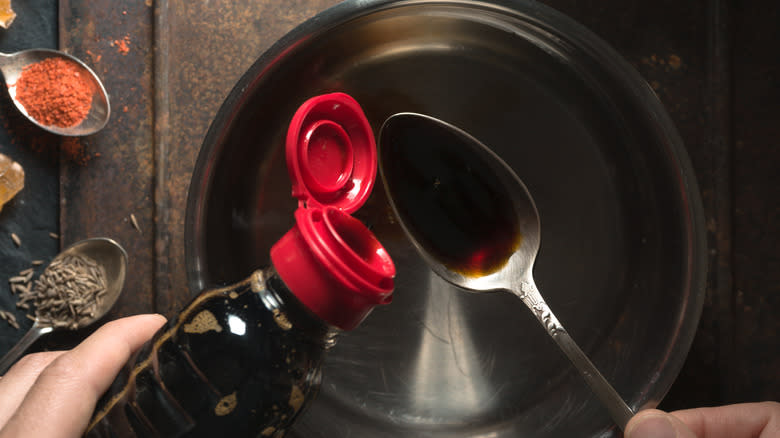Soy Sauce Is The Unexpected Addition For Meatier Tasting Bolognese

For as many types of pasta in existence, there are just as many sauces. Beyond classics like pesto and alfredo, bolognese outshines them all. A meat sauce crafted with a lengthy list of ingredients, it's the low and slow simmering process that gives bolognese its iconically savory flavor. Rich and meaty as the recipe may be, there's no harm in wanting to amplify it even further. However, it might be surprising to learn that soy sauce is actually the best option.
In comparison, to a host of costly Italian ingredients that teem with savory goodness like briny colatura di alici, earthy porcini mushrooms, or aged Parmigiano, soy sauce is a relatively inexpensive and widely accessible flavor enhancer. While we won't deny that the savory sauce is far from a traditional ingredient in bolognese sauce, the Asian condiment proves its worth for one simple reason — it's bursting with umami.
Read more: 26 Types Of Pasta Sauce Explained
How To Work Soy Sauce Into Bolognese

Even your nonna's tried-and-true bolognese recipe can benefit from a splash of soy sauce. The question is, how should you go about introducing it into the meat sauce? Before raiding your fridge, keep in mind that soy sauce varieties can vary. For example, white soy sauce can impart mildly sweet nuances, almost like a sharp but smooth, gluten-free tamari. In contrast, light soy sauce can leave behind traces of salt and brine, whereas dark soy sauce instead contributes a caramelized quality.
Regardless of which soy sauce you decide to use, it shouldn't detract from the bolognese but rather enhance its flavor. It's for this reason that you should not add excessive amounts of the condiment. One to two tablespoons are more than capable of boosting umami in the bolognese. The trick is to drizzle in the soy sauce once you've sauteed the soffritto, browned the meat, and deglazed the pan. As you're about to add in the tomatoes, broth, and remaining aromatics, pour in the soy sauce. Then, let the bolognese simmer for a couple of hours.
You'll know the sauce is ready when the sweetly savory aroma of meaty bolognese fills your kitchen, sending your salivary glands into a frenzy — we're drooling just thinking about it.
Read the original article on Tasting Table.


